Real estate photography has evolved to offer stunning visual techniques that elevate property listings. You'll find aerial mapping and site planning provide extensive bird's-eye views, while dynamic exterior fly-through shots create immersive experiences. Interior panoramic drone footage captures 360-degree views, showcasing property flow. Twilight and golden hour captures harness enchanting light conditions to enhance appeal. 3D property modeling from drones offers interactive, detailed representations for virtual tours. These advanced techniques require specialized equipment, careful planning, and adherence to regulations. By incorporating these innovative approaches, you'll captivate potential buyers and set your listings apart. Explore further to reveal the full potential of modern real estate photography.
Aerial Mapping and Site Planning
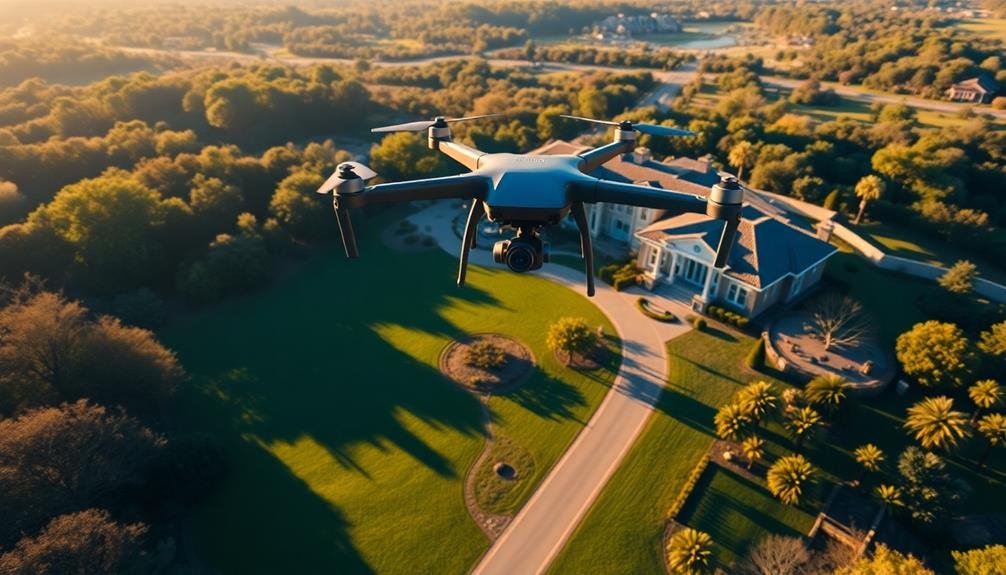
In recent years, aerial mapping and site planning have revolutionized real estate photography. These techniques offer a thorough view of properties, showcasing their layout, surrounding areas, and unique features from a bird's-eye perspective.
To incorporate aerial mapping, you'll need to use drones or hire professional aerial photographers. They'll capture high-resolution images and videos of the property from various angles and altitudes. This approach helps potential buyers visualize the entire property, its boundaries, and its relation to nearby amenities.
Site planning takes aerial photography a step further by overlaying property information onto these images. You can highlight lot lines, building footprints, and proposed developments. This technique is particularly useful for large estates, undeveloped land, or properties with extensive outdoor features.
When implementing aerial mapping and site planning, make sure you comply with local regulations regarding drone usage. Consider the best time of day for capturing images, typically during the "golden hour" just after sunrise or before sunset.
Use editing software to enhance colors, adjust contrast, and add labels or annotations to the images. These techniques will greatly elevate your property visuals, giving potential buyers a thorough understanding of the real estate offering.
Dynamic Exterior Fly-Through Shots
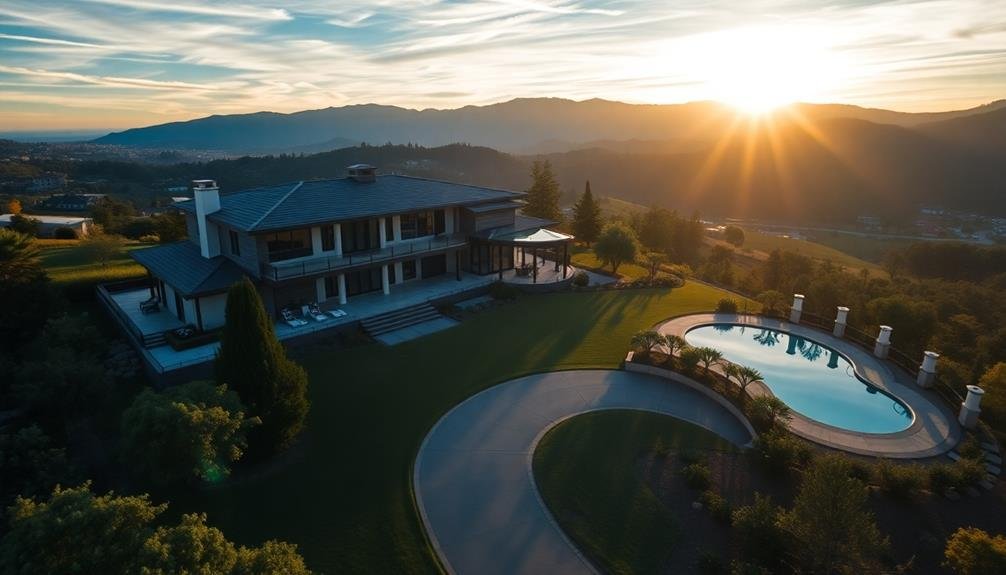
Imagine soaring around a property like a bird, capturing every stunning detail. That's exactly what dynamic exterior fly-through shots offer in real estate photography. These sweeping aerial views provide potential buyers with an immersive experience, showcasing the property's layout, surroundings, and unique features.
To create engaging fly-through shots, you'll need a drone equipped with a high-quality camera and stabilization technology. Plan your flight path carefully, considering the property's best angles and key selling points. Smooth, fluid movements are vital for professional-looking results.
Here's a quick guide to essential fly-through techniques:
| Technique | Purpose | Best For |
|---|---|---|
| Reveal | Dramatic entrance | Grand estates |
| Orbit | 360° view | Unique architecture |
| Tracking | Follow property lines | Large lots |
| Ascend/Descend | Show vertical scale | Multi-story homes |
| Tilt | Highlight specific features | Landscaping, pools |
Remember to comply with local drone regulations and obtain necessary permissions. With practice and creativity, you'll master dynamic exterior fly-through shots that elevate your real estate photography portfolio and engage potential buyers.
Interior Panoramic Drone Footage
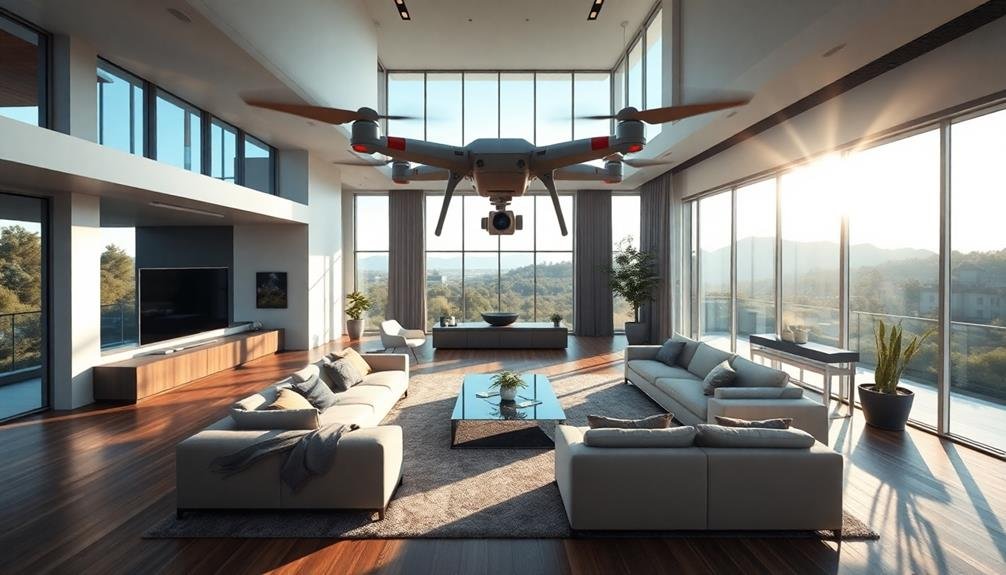
While exterior drone footage captures the property's grandeur, interior panoramic shots bring viewers inside, offering a detailed view of the home's layout and flow.
With advancements in drone technology, you can now capture stunning 360-degree interior footage that showcases spacious rooms and intricate details. These shots provide potential buyers with an immersive experience, allowing them to virtually explore the property from various angles.
To create impressive interior panoramic drone footage, you'll need to:
- Use a compact, lightweight drone designed for indoor flying
- Guarantee proper lighting to highlight key features and create ambiance
- Plan your flight path carefully to avoid obstacles and capture the best angles
- Edit the footage to create smooth shifts between rooms
When executing these shots, maintain a steady altitude and slow speed to capture clear, stable footage.
Focus on highlighting unique architectural features, such as vaulted ceilings, open floor plans, or custom built-ins. By combining interior panoramic drone footage with traditional photography and exterior shots, you'll create an all-encompassing visual package that sets your property listing apart and engages potential buyers on a deeper level.
Twilight and Golden Hour Captures
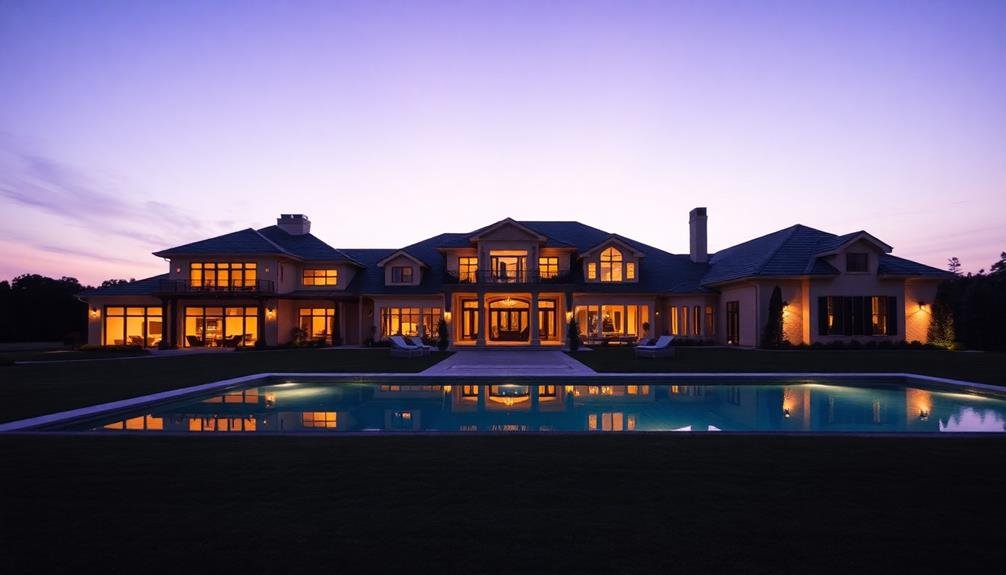
As the sun dips low on the horizon, real estate photographers seize the opportunity to capture properties in their most enchanting light. Twilight and golden hour shoots can transform ordinary listings into stunning showcases, enticing potential buyers with a magical ambiance.
During the golden hour, just after sunrise or before sunset, you'll want to leverage the warm, soft light to highlight a property's exterior features. This time bathes buildings in a flattering glow, enhancing textures and creating long, dramatic shadows.
Position yourself to capture the interplay of light on architectural elements and landscaping.
For twilight shots, timing is essential. You'll typically have a 15-20 minute window after sunset to capture the perfect balance between ambient light and artificial lighting. Turn on all interior and exterior lights to create a warm, inviting glow.
Use a tripod and longer exposures to capture the deep blue sky contrasting with the property's illuminated features.
Consider bracketing your exposures to guarantee you capture details in both highlights and shadows. In post-processing, blend these exposures for a balanced, eye-catching final image that showcases the property at its most alluring.
3D Property Modeling From Drones
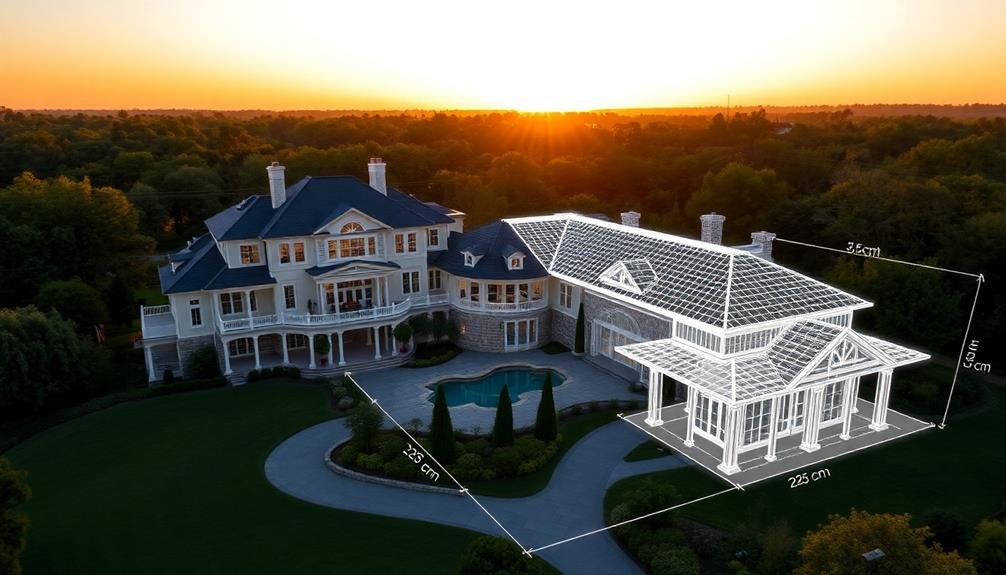
Drones have revolutionized real estate photography, offering a new dimension to property showcases.
3D property modeling from drone footage takes aerial imagery to the next level, providing potential buyers with immersive, interactive experiences. By capturing multiple angles and elevations, you can create detailed 3D models that allow viewers to explore properties virtually.
To create effective 3D property models using drones, you'll need to:
- Plan your flight path carefully to guarantee thorough coverage
- Use high-resolution cameras and stabilization equipment for crisp imagery
- Capture overlapping images to facilitate accurate stitching and reconstruction
- Employ specialized software to process and render the 3D models
These models offer numerous advantages, including the ability to showcase expansive properties, highlight unique architectural features, and provide context for the surrounding landscape.
You can also integrate these 3D models into virtual tours, allowing potential buyers to navigate through the property and its grounds from any device.
Frequently Asked Questions
How Do I Choose the Right Camera Equipment for Real Estate Photography?
You'll want to invest in a wide-angle lens for spacious shots. Choose a DSLR or mirrorless camera with good low-light performance. Don't forget a sturdy tripod for stability and a flash for interior lighting.
What Are the Best Post-Processing Techniques for Real Estate Photos?
For the best post-processing techniques, you'll want to focus on balancing exposure, enhancing colors, and correcting lens distortion. Don't overdo it; aim for natural-looking results. Use HDR blending, remove distractions, and guarantee straight vertical lines.
How Can I Effectively Stage a Property for Photography?
To effectively stage a property for photography, you'll want to declutter, depersonalize, and deep clean. Arrange furniture to create flow, add pops of color with accessories, and guarantee proper lighting. Don't forget exterior curb appeal too.
What Lighting Techniques Improve Indoor Real Estate Photography?
You'll improve indoor real estate photos by using natural light when possible. Open curtains and turn on all lights. For darker areas, use flash bounced off ceilings or walls. Experiment with different white balance settings for warmth.
How Do I Capture Small Spaces to Make Them Appear Larger?
You can make small spaces appear larger by using a wide-angle lens, shooting from corners, maximizing natural light, and minimizing clutter. Strategically place mirrors, and keep furniture to a minimum to create an open, airy feel.
In Summary
You've now explored cutting-edge real estate photography techniques that'll set your listings apart. From aerial mapping to twilight shots, you're equipped to showcase properties in their best light. Don't forget to experiment with drone footage and 3D modeling to give potential buyers an immersive experience. By implementing these advanced visual strategies, you'll elevate your property presentations and attract more interested buyers. Stay ahead of the curve and watch your listings shine.

As educators and advocates for responsible drone use, we’re committed to sharing our knowledge and expertise with aspiring aerial photographers.
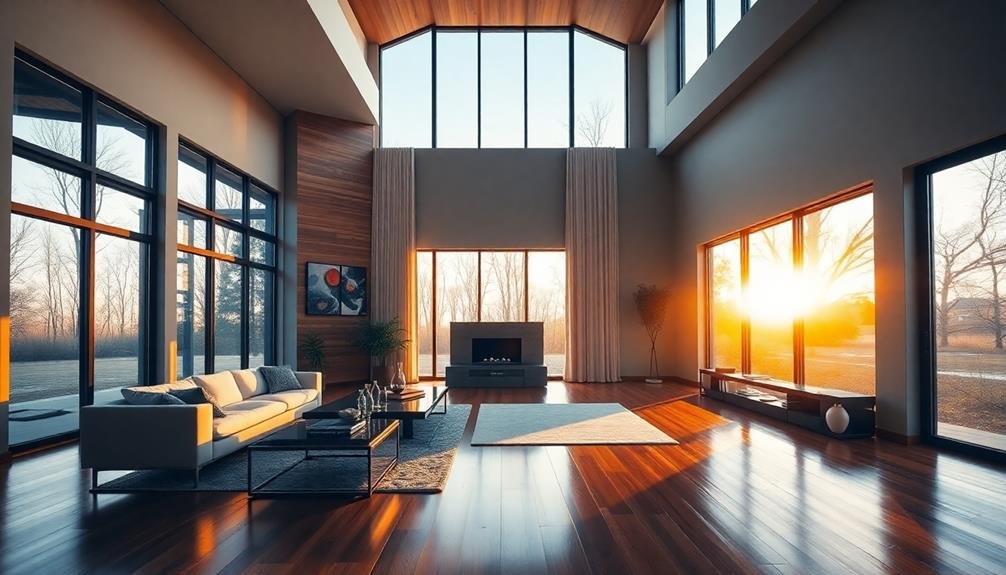



Leave a Reply